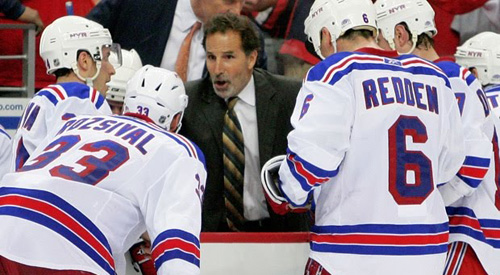
Why a contract amnesty clause is good for the league
If the NHL owners and NHLPA ever get past the major stumbling blocks to the current CBA negotiations, they might look to the NBA for an idea to help both players and owners.
The NBA implemented a one-time contract amnesty after its lockout in 2011, allowing teams to rid themselves of one bad contract. It’s an interesting idea that the NHL could try to emulate.
A one-time contract amnesty isn’t a core issue for players or owners though, so it hasn’t received much attention during the initial negotiations for a new CBA. However, once both sides delve deeper into secondary issues, it is something they may quickly realize has potential benefits for everyone involved.
The entire point of a new CBA from the owner’s perspective is to give themselves as many tools as possible to make money, and the best way to do so is to forcibly curb spending. Invariably, nothing ever works to limit spending — not even a salary cap — and teams shell out obscene amounts of cash for players every year whether it’s good for them or not. They just can’t help themselves. If an excellent player is freely available and a team has cap space, it’s hard not to justify paying a high price in order to sign him and improve the team.
That’s why you have owners like Minnesota’s Craig Leipold saying “we’re not making money, and that’s one reason we need to fix our system,” in April, and then proceeding to spend close to $200 million on two players in July.
With a contract amnesty, GMs would be able to clean up some of the mistake contracts handed out in the past when they couldn’t help themselves.
[php snippet=1]
Plus, the owners are pushing hard to reduce the players’ portion of hockey related revenues, which would also reduce the salary cap. If the salary cap goes down, some teams may need help trimming their financial burdens. There are already six teams that are over last year’s cap, which is what the salary cap will be roughly if the players and owners agree on a 50-50 split in revenues.
Providing a one-time contract amnesty is the simplest way to help teams to get under the salary cap. Trades are less likely as many other teams aren’t going to be willing to take on someone else’s overpriced players if they are contending with a shrinking cap ceiling themselves.
Even teams that aren’t in dire cap trouble can use the clause to save themselves some cap space that can be used to sign other free agents. However, this might be what divides the owners, as the league’s richer teams would have no problem paying a buyout salary on top of any new salary they take on as a replacement, something the poorer teams are probably incapable of doing.
As for the player, allowing a contract amnesty likely wouldn’t reduce his overall revenue. If the amnesty eliminated the cap hit but was structured like a regular buyout — requiring the team to still pay two-thirds of a player’s remaining salary — players could actually come out of a buyout just as wealthy as under their original contract.
For example, this summer the Maple Leafs bought out the remaining year of Colby Armstrong’s contract, worth $3 million. This forced them to pay $1 million for each of the next two seasons which, combined with the $1 million the Canadiens gave Armstrong to play in Montreal, means Armstrong didn’t lose any money by being bought out.
It also gives a chance for banished veterans the opportunity to play again in the NHL. Wade Redden’s value as a player is entirely tied to the value of his contract, which has two more years remaining at $6.5 million. Unfortunately, Redden was in no way able to come close to matching that contract, which is why the Rangers dumped him in the AHL. However, on a cheaper contract, there is no doubt Redden could still help a team, even at age 35. Allowing the Rangers to buy out Redden would give another team a chance to sign him for less money, which would save him from riding the buses.
It would also save players struggling mightily under the weight of an enormous contract. Scott Gomez has been a disaster after signing a huge seven-year, $51.5 million contract with the Rangers and his play has only exacerbated since joining the Montreal Canadiens. Allowing the Habs to cut Gomez loose would give the center a chance to start fresh in another city and salvage what’s left of his hockey career.
A contract amnesty would also be a win for the fans. Aside from Zach Parise and Ryan Suter, this offseason hasn’t had many star-quality free agents. Although there have been some major trades, on a whole it hasn’t been as wild as in other years. Adding an influx of free agents, all recently bought out right before training camp starts, would make for an interesting few weeks.
Notable players such as Roberto Luongo and Vincent Lecavalier could become free agents, which at a reduced rate could be a major improvement for certain teams. Even disappointing players like Mike Komisarek or Shawn Horcoff could provide value for a new team with a change of scenery.
A second wave of free agents would be fun to watch as a fan after seeing many teams sit on their hands all summer, and as a fan there isn’t much better to do in the summer than criticize how someone else spends their money.
Contract amnesty doesn’t have to simply be about players losing jobs. Let’s just hope the NHL and NHLPA can recognize the benefits involved.
[php snippet=1]

